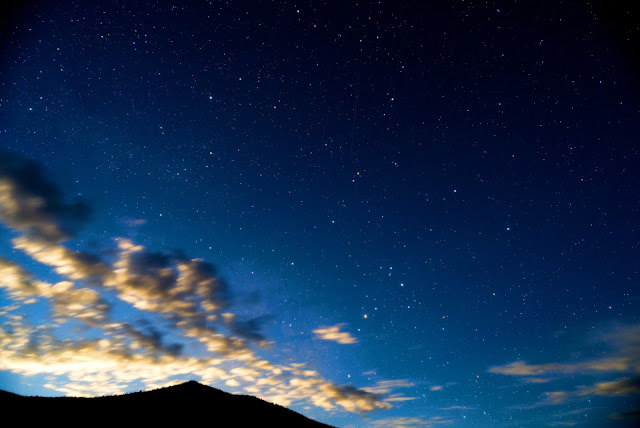At 10:50 pm on Sunday night the Moon had technically risen above the distant theoretical horizon, but it was still well hidden by the nearby southern flank of Snowshoe Mountain. The passing clouds, however, were vividly illuminated by the unseen Moon.
 |
Sony A7iii + Sony 20mm f/1.8 G lens + Sparkle-6 filter. ISO 1600, 30 s.
|
In this image above Arcturus is the bright star near center top. Arcturus is the fourth brightest star in the entire sky and the brightest in the north celestial hemisphere. Somewhat lower and midway to the right edge of the frame is the constellation Coma Berenices, which is dominated by the star cluster Melotte 111. This cluster is the second closest open star cluster. Here is a closer look, cropped from the above image:
 |
Melotte 111 in Coma Berenices. Sony FE 20mm f/1.8 + Hoya Sparkle-6 filter. 31-deg FOV.
|
This next image of the cluster nicknamed the "Coathanger" was obtained the previous evening, again with the unseen moon brightening the sky. This cluster is officially designated Collinder 399 and is thirteen times farther away than Melotte 111.
 |
"The Coathanger", Collinder 399. Canon FD 300mm f/4L + Kase Astroblast filter. 4.6-deg FOV.
|
The famous RIng Nebula, M57, was also visible in the moon-brightened sky. |
Canon FD 300mm f/4L. ISO 1600, 15 s.
|
In this image M57 is the pale blue ring near the center. The bright star below center left is Sulafat (Gamma Lyrae) and the star above center right is Sheliak (Beta Lyrae).
Here is a 1:1 crop of M57, the RIng Nebula:
 |
The RIng Nebula, M57. 1-deg FOV.
|
This nebula is a fun challenge to find in small telescopes, and is best appreciated with larger scopes.



































_Pallas-cs3-apP6022067.jpg)
_Pallas-apP6022067.jpg)